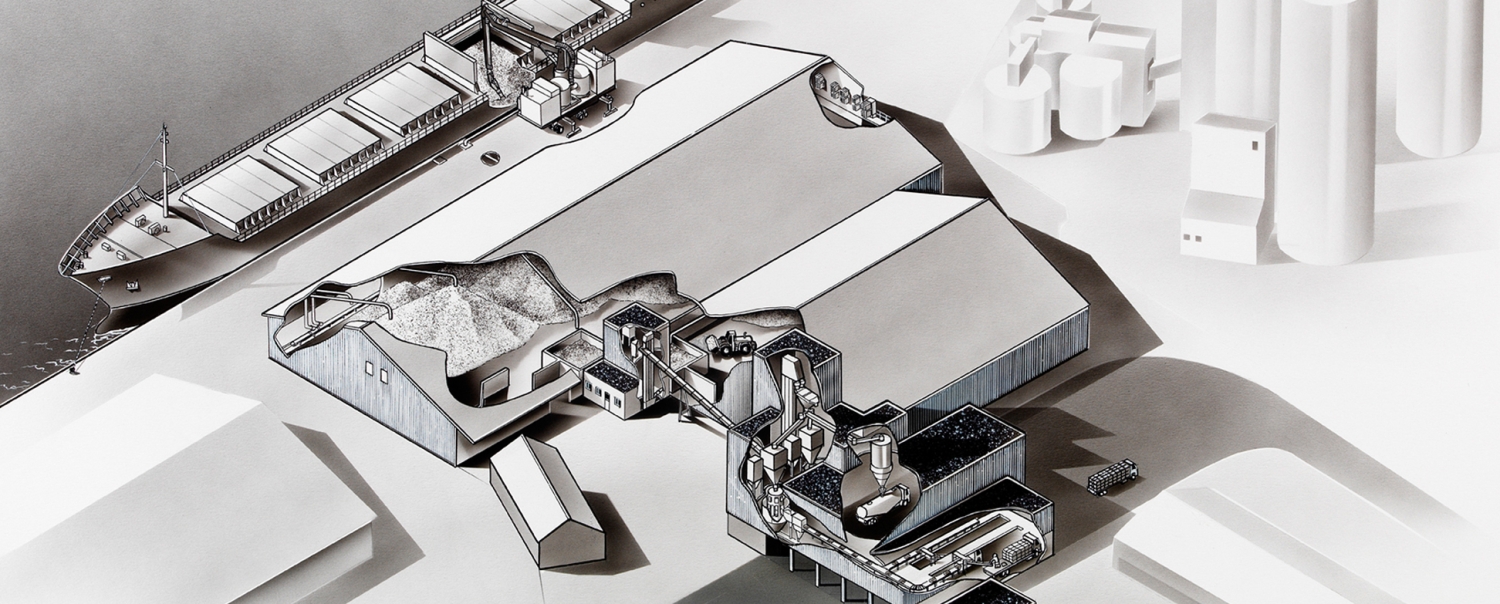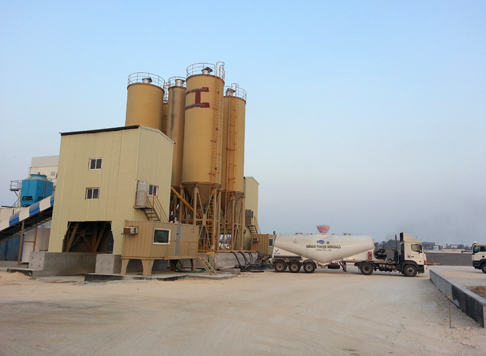
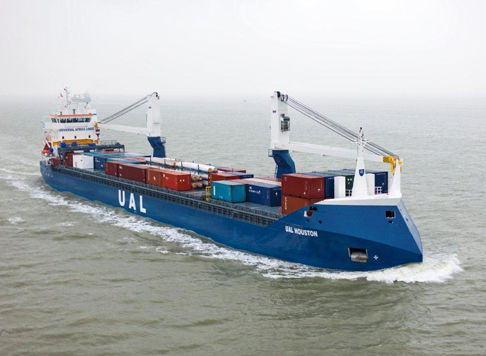

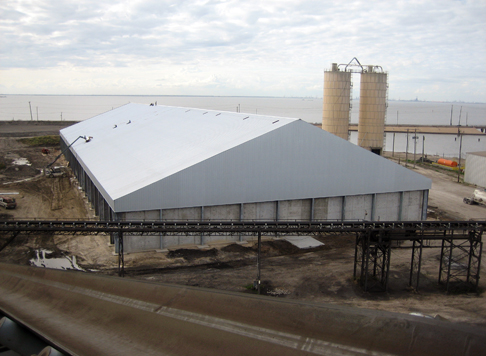
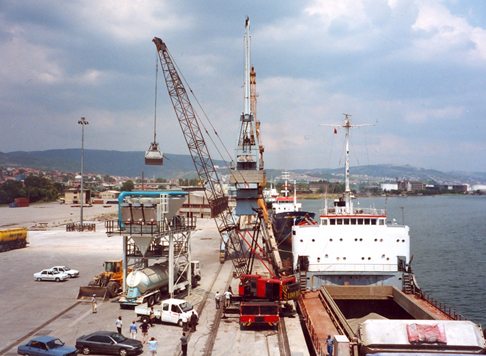
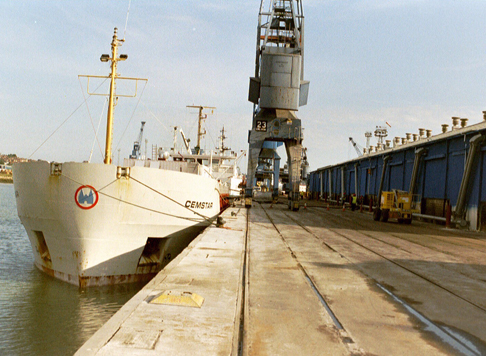
The cement industry in a nutshell
It is all about running cement plants at the highest possible utilisation rate.
The production capacity of a cement plant is a constant figure but the market in which it operates is in constant change. When the economy grows, cement consumption grows even faster and more cement is needed in that market than the local cement plant can produce. Cement from other cement plants further away has to be transported to the market area. When the cement plant expands with an additional kiln line its capacity will then probably exceed the consumption of its market area. In this case the cement plant needs to find other markets further away to maximise its production utilisation. There are two ways to do this: Trade and distribution.
Cement trade basically consists of bringing together a cement producer and a cement user (in most cases in another country) and arranging for all requirements to get the cement from one to the other. Cement trade is a highly specialised profession. It requires a detailed knowledge of the global markets, a technical knowledge of cement quality and consistence of quality. It requires knowledge of the technical aspects, the logistics and the economics of the transportation and terminal issues. It requires experience in the politics, trials and tribulations that go with the business.
A very large portion of global cement trade is controlled by the large multinational cement producers. They have the capability to source cement from their own plants with excess capacity and direct this cement to their own markets overseas which have a shortage. This gives them a huge advantage. Cement trading is for the multinationals also a method to get a foot hold in areas where they are not yet present. Most of the multinational cement producers have their own trading companies. Apart from the trading divisions of the multinationals there still is a large remaining “free” market with independent producers, traders and cement consumers.
Cement distribution is different. This is national or regional distribution of cement in which one company owns or controls the cement manufacturing, the transport, terminals, etc. to get the cement to a number of markets.
For cement trade and distribution it is needed to transport cement by either ship, train or truck. This report focusses mainly on distribution by ship, although it provides some figures and side information on land based cement trade and distribution. Also sometimes combinations of truck, rail and ship transportation are being used.
Cement transportation by water is usually the link between a loading facility of a cement producer in a port and either a waterside import terminal or distribution terminal. Cement transportation by water can be realised by either using general cargo ships or specialised cement carriers that have their own loading and discharge systems on board.
General cargo ships are available in a wide range of types and sizes. For distribution on inland waterways there are barges or small self-propelled ships ranging between 200 and 2.500 tons. For cement transport in coastal waters ships between 1.000 and 7000 Dwt are available. For larger distances there are small bulk carriers (up to 15.000 Dwt), Handysize bulk carriers (15.000 – 30.000 Dwt) and handy max bulk carriers (30.000 – 55.000 Dwt). The handy max vessels are the largest type of ship used for cement transport. In only a few exceptional cases larger vessels have been used.
Self-discharging cement carriers are also available in a wide size range. Although the range goes from 300 Dwt to 40.000 Dwt the majority of the vessels is in the 2.000 to 8.000 Dwt range and used for domestic and regional transportation.
The cost of transportation is a key factor in competitively supplying customers with cement. The cost of waterborne transportation is dependent on fuel cost, transportation distance, ship size and several other factors but most of all the market conditions on the required trading route. Shipping itself is a complete industry with investors, ship owning companies, ship management companies and brokers.
For the transportation the choice can be made to ship either clinker or cement. Shipping clinker does not require specialised ships or handling equipment and as such has a lower transportation cost than cement. It does however, required a grinding plant with a storage facility of suitable size on the receiving end. Cement can either be shipped in paper bags, big bags or in bulk. Shipping in paper bags is expensive but does not require any specialised discharge equipment or storage facilities. Big bag (which have a size between 1 and 2 tons each) can also be handled with regular port cranes and warehouses but require a bag breaking, intermediate storage and bulk truck loading facility. Big bags are used for short term or low volume bulk markets. Transportation cement in bulk has the lowest transportation cost and is the most used method to ship cement. It does require specialised loading and discharge terminals.
There is a wide variety in loading and discharge terminals. There are cement plants on the seaside or riverside which have their own docks or even a private port. They are able to load clinker, bulk and bagged cement and have the large required storage facilities and ship loading systems. Most of these plants use their port facility also to import coal and minor raw materials such as gypsum. Some plants not located on the waterside send clinker and cement by truck or rail to a dedicated port facility. Sometimes even no dedicated port facility is used and ships are loaded directly from trucks in a general port.
Discharge terminals offer an amazing range of types and size which are not just based on logistics and economics but also on available port sites and on the type and stability of the markets they serve. Ranging from direct ship to truck discharge to mega size terminals with over 100.000 tons of storage capacity and hundreds of variations in between, discharge terminals offer a colourful side to the cement industry.
Sustainability issues in the cement industry are having a growing effect on cement trade and distribution. There result is a growing share of clinker in trade and distribution and a strong increase in the trade and distribution of cement replacing materials such as Ground Granulated Blast Furnace Slag, fly ash as well as other pozzolanic materials.
